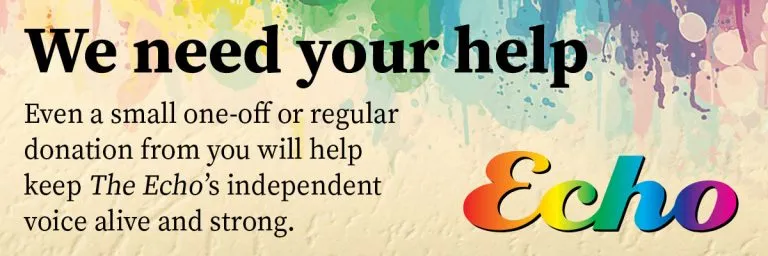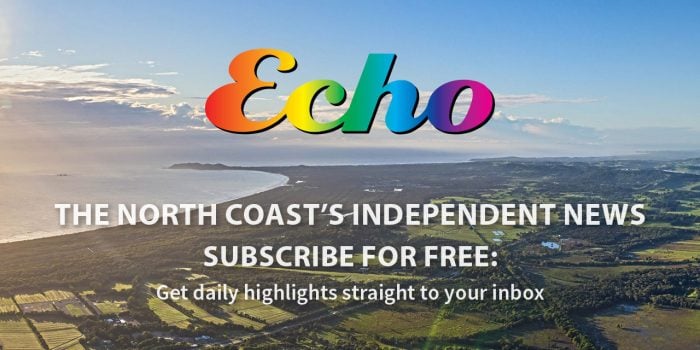Brought to you by Cosmos Magazine and The Echo
Trove is a cornerstone of many academics’ lives.
The archive Trove is set to go offline in the middle of the year.
The National Library of Australia (NLA), which operates the resource, says that it has insufficient funds to keep Trove running after June 2023.
Most of Trove’s 22 million annual page visits come from members of the public: family historians, students, and general browsers interested in the six billion records it houses. But over the past 14 years, the archive has also become a crucial resource for academic work.
“It’s really concerning to think that it might not be there,” says Professor Sally Young, a researcher in political science at the University of Melbourne.
“It’s a huge resource, and really vital to Australian history, politics, social studies – everything.”
Many Australian researchers now depend upon Trove.
“I use Trove most days – often several times a day,” says Professor Bridget Griffen-Foley, Director of Research and Innovation in Macquarie University’s Department of Media, Communications, Creative Arts, Language and Literature.
“I use it to check on book, thesis and periodical holdings in libraries; to find out about manuscript collections; to locate photographs and portraits; and of course to search full-text newspaper articles and issues.”
While these records exist elsewhere, Trove has made this work much more efficient – particularly the newspaper database.
“If you didn’t have Trove, and I had done this pre-Trove, you are sitting in an archive or sitting in a library, and literally going through microfilm, page after page after page, making notes and copying,” says Associate Professor Fay Anderson, from Monash University’s School of Media, Film, and Journalism.
She adds that Trove’s newspapers are also a useful resource for teaching journalism students.
“I teach Fundamentals of Journalism. The students [can use Trove] to see the incredibly racist sort of language and rhetoric about First Nations people in the 1930s, 1940s and 1950s, for example.”
Trove’s utility isn’t limited to humanities and social sciences.
“Trove has been used a lot for climate change research,” says Dr Marie-Louise Ayres, Director-General of the NLA.
“Whether it’s fishing stocks or bushfires, temperatures, soils, or which animals became extinct and when, Trove is very useful.”
Historic newspapers and records are often the best indicators of precise climate data in the 19th and early 20th centuries.
“That’s going to get even better. We’re working with the [NSW] Soil Knowledge Network to digitise technical manuals, et cetera, to be combined with newspaper content and our digitized almanac,” says Ayres.
Ayres adds that Trove has become a significant resource for historians of Australian science.
“We worked with the Academy of Humanities recently to digitise the diaries of Frank Fenner and the papers of Frank MacFarlane Burnet. So sometimes it’s about the content of great scientists.”
Read more: Trove in trouble: why does it cost money to keep the resource online?
In a world where climate change is prompting more and more people to move, archives like Trove can also provide valuable storage for shrinking communities.
Professor Linda Barwick, who has just been appointed a Member of the Order of Australia for significant service to preservation and digitisation of cultural heritage recordings, has contributed to Trove’s archives through the development of the Pacific and Regional Archive for Digital Sources in Endangered Cultures (PARADISEC).
PARADISEC stores 15,700 hours of audio and 2,600 hours of video recordings, representing more than a thousand endangered languages, mostly from the Pacific region. All of this can be accessed through Trove.
“You might find some people whose own small language is represented in the PARADISEC collection, but they could be living anywhere,” says Barwick.
“And similarly, some of their materials might have been recorded by different people and ended up in different archives. So the role of these content aggregation services like Trove is actually ever more important in today’s world.”
Read more: AM recipient Linda Barwick concerned about Trove’s future
Barwick has also found Trove valuable to her own work with First Nations music and language recording.
“Say there are recordings from the 1930s or 40s, without enough metadata or information with them to know who recorded them and where, and therefore which people should be made aware of their existence. Sometimes, doing searches in the newspaper archive can throw up ‘oh, there’s been an expedition that went from point A to point B to point C’.”
But as popular as it is, Trove’s impending funding cut is neither unprecedented (the service was first put under threat in 2016), nor unusual for the cultural institutions it relies on.
“It’s not just the National Library that’s affected by this. It’s the National Archives, the National Gallery, and so on. Our national cultural institutions are holders of so much material that is essential to understanding who we are and where we’ve come from, and making those alliances across different domains,” says Barwick.
“There’s just been this gradual bleeding of those institutions to the point where, after years of efficiency dividends, having to do more with less every year, it’s now getting to the point where they’re looking at closing these services.”
Should it not receive enough long-term funding to survive, academics will not be the only people missing Trove. The vast majority of Trove users are members of the public.
“We’ve always been very fortunate in Australia that it’s free. In other countries, that’s not the case,” says Young.
“It’s just a very democratic, well organised, user friendly, extraordinary sort of resource. I guess I’ve taken it for granted at some points – how you can just sit there and find out absolutely anything that you needed to.”
Without further funding, the NLA’s Trove Strategy states, it will cease offering Trove at the end of June.
“For it to just stop and disappear would be a tragedy,” says Young.
This article was originally published on Cosmos Magazine and was written by Ellen Phiddian. Ellen Phiddian is a science journalist at Cosmos. She has a BSc (Honours) in chemistry and science communication, and an MSc in science communication, both from the Australian National University.





Arguably the best resource for Australian historical and genealogical research.
eg https://trove.nla.gov.au/search?keyword=Aquarius%20festival%20Nimbin
Enjoy.